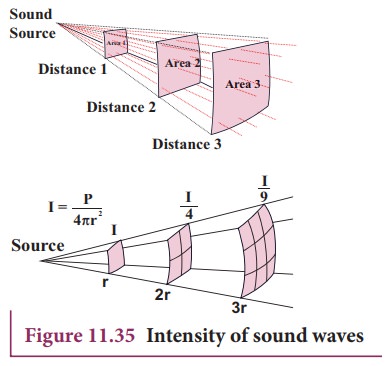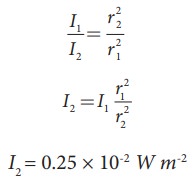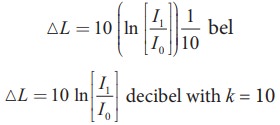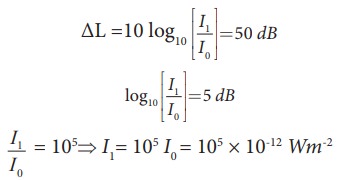Solved Example Problems | Physics - Intensity and Loudness of sound | 11th Physics : UNIT 11 : Waves
Chapter: 11th Physics : UNIT 11 : Waves
Intensity and Loudness of sound
INTENSITY
AND LOUDNESS
Consider
a source and two observers (listeners). The source emits sound waves which
carry energy. The sound energy emitted by the source is same regardless of
whoever measures it, i.e., it is independent of any observer standing in that
region. But the sound received by the two observers may be different; this is
due to some factors like sensitivity of ears, etc. To quantify such thing, we
define two different quantities known as intensity and loudness of sound.
Intensity of sound
When
a sound wave is emitted by a source, the energy is carried to all possible
surrounding points. The average sound energy emitted or transmitted per unit
time or per second is called sound power. Therefore, the intensity of sound is defined
as “the sound power transmitted per unit
area taken normal to the propagation of the sound wave ”.

For
a particular source (fixed source), the sound intensity is inversely
proportional to the square of the distance from the source.

This
is known as inverse square law of sound intensity.
EXAMPLE 11.23
A
baby cries on seeing a dog and the cry is detected at a distance of 3.0 m such
that the intensity of sound at this distance is 10-2 W m-2. Calculate the intensity
of the baby’s cry at a distance 6.0 m.
Solution
I1 is the intensity of sound detected at a distance 3.0 m and it is given as 10-2 W m-2. Let I2 be the intensity of sound
detected at a distance 6.0 m. Then,
r1
= 3.0 m,
r2 = 6.0 m

the
power output does not depend on the observer and depends on the baby.
Therefore,

I2 = 0.25 × 10-2
W m-2
Loudness of sound
Two
sounds with same intensities need not have the same loudness. For example, the
sound heard during the explosion of balloons in a silent closed room is very
loud when compared to the same explosion happening in a noisy market. Though
the intensity of the sound is the same, the loudness is not. If the intensity
of sound is increased then loudness also increases. But additionally, not only
does intensity matter, the internal and subjective experience of “how loud a
sound is” i.e., the sensitivity of the listener also matters here. This is
often called loudness. That is, loudness depends on both intensity of sound wave
and sensitivity of the ear (It is purely observer dependent quantity which
varies from person to person) whereas the intensity of sound does not depend on
the observer. The loudness of sound
is defined as “the degree of sensation of
sound produced in the ear or the
perception of sound by the listener”.
Intensity and loudness of sound
Our
ear can detect the sound with intensity level ranges from 10-2 Wm-2 to 20 W m-2.
According
to Weber-Fechner’s law, “loudness (L) is proportional to the logarithm of the
actual intensity (I) measured with an accurate non-human instrument”. This
means that
L
∝ ln I
L
= k ln I
where
k is a constant, which depends on the
unit of measurement. The difference between two loudnesses, L1 and L0 measures the relative loudness between two precisely
measured intensities and is called as sound intensity level. Mathematically,
sound intensity level is

If
k = 1, then sound intensity level is
measured in bel, in honour of Alexander Graham Bell. Therefore,

However,
this is practically a bigger unit, so we use a convenient smaller unit, called decibel.
Thus, decibel = 1/10 bel. Therefore, by multiplying and dividing by 10, we get

For
practical purposes, we use logarithm to base 10 instead of natural logarithm,

EXAMPLE 11.24
The
sound level from a musical instrument playing is 50 dB. If three identical
musical instruments are played together then compute the total intensity. The
intensity of the sound from each instrument is 10-12 Wm-2
Solution

I1 = 10-7 Wm-2
Since
three musical instruments are played, therefore, Itotal = 3I1
= 3 × 10-7 Wm-2.
Related Topics